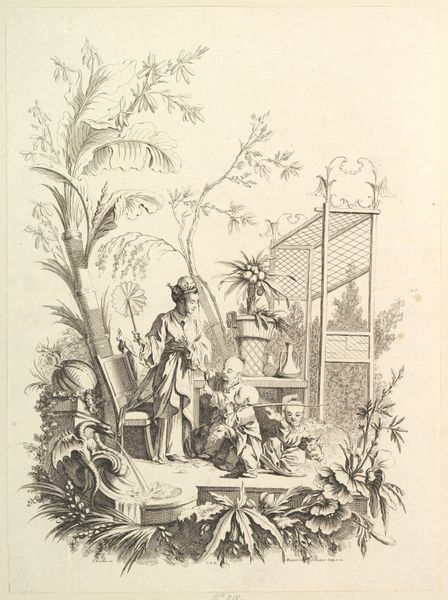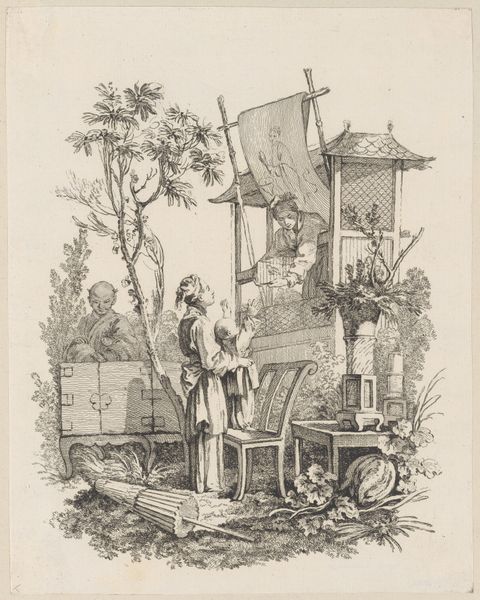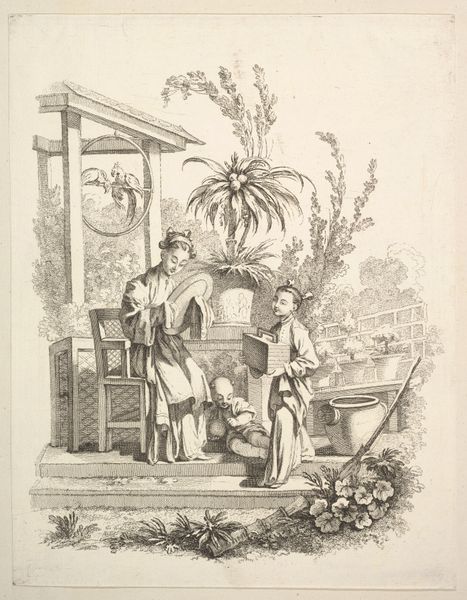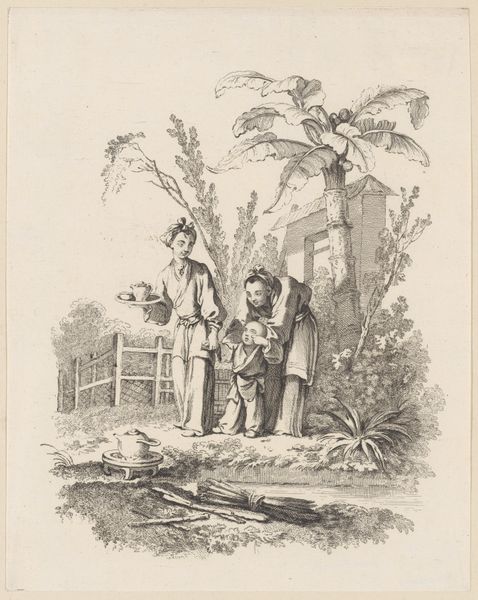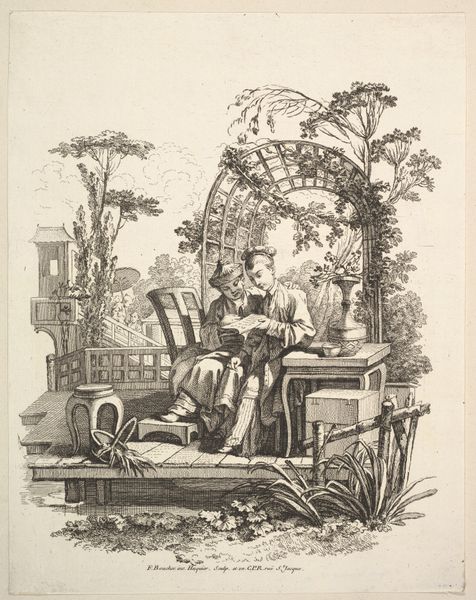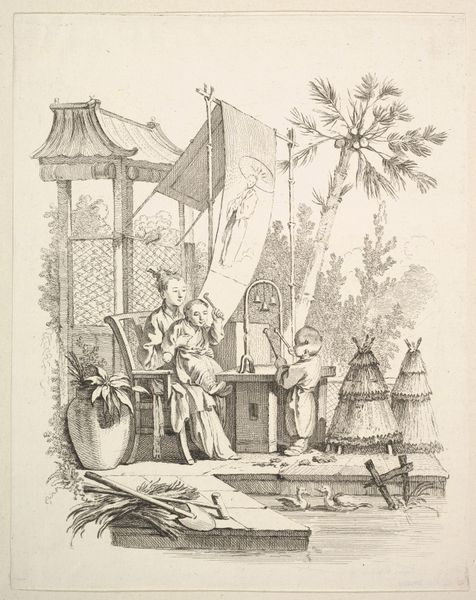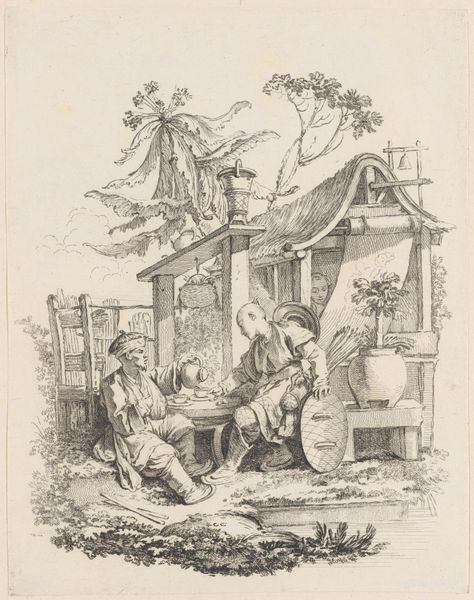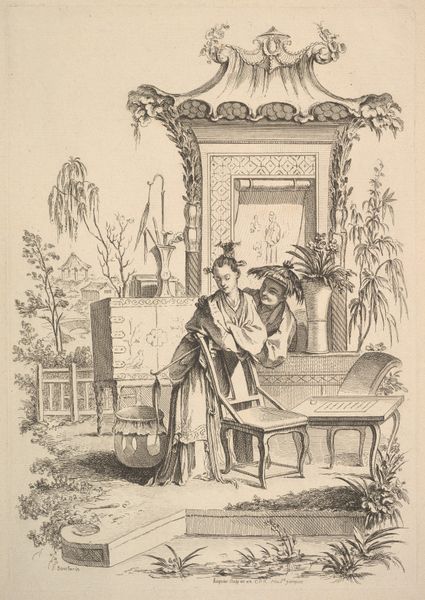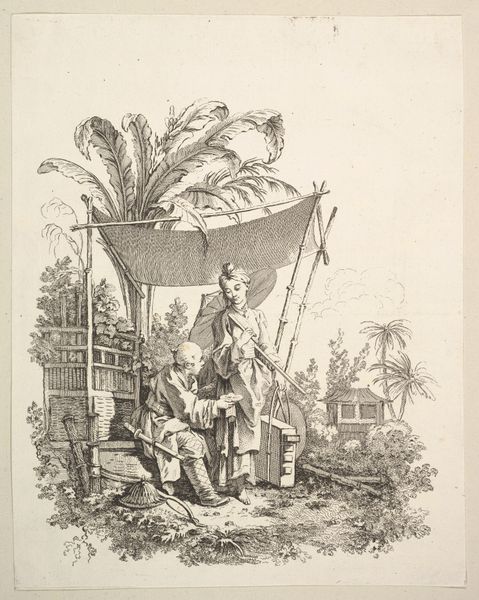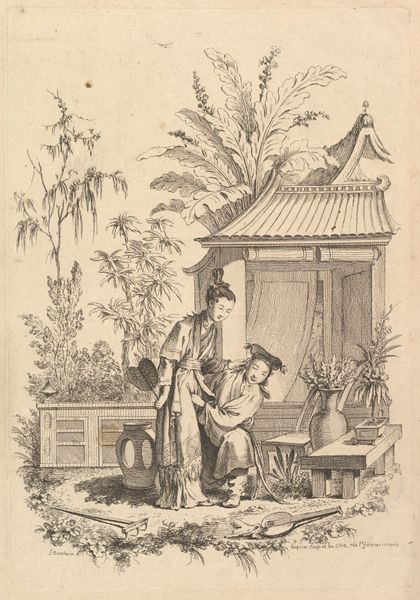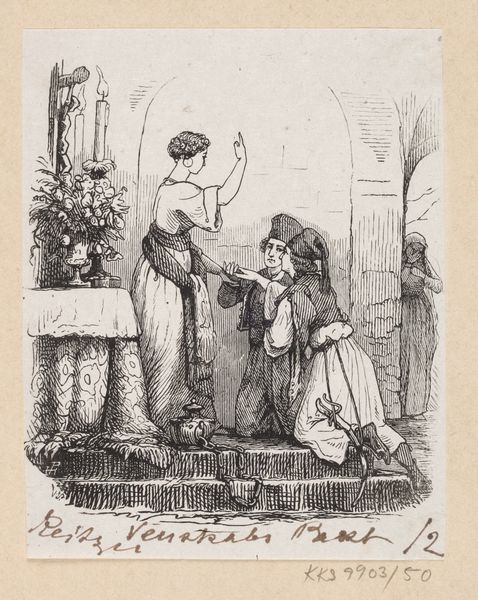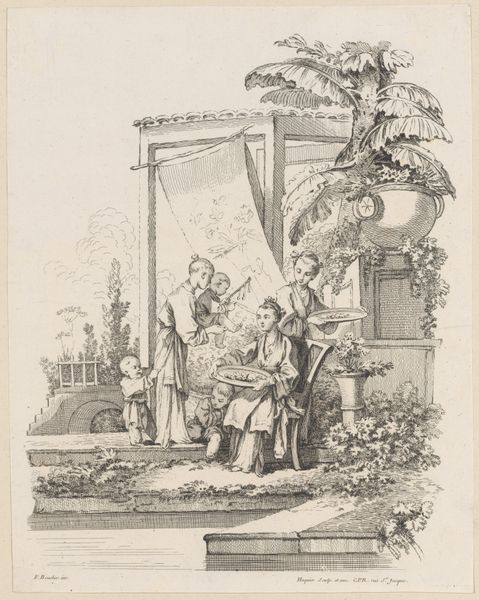
drawing, print, etching
#
drawing
#
ink drawing
# print
#
pen sketch
#
etching
#
asian-art
#
landscape
#
bird
#
boy
#
figuration
#
genre-painting
#
musical-instrument
#
rococo
Dimensions: Sheet (trimmed): 11 3/4 × 9 1/4 in. (29.8 × 23.5 cm)
Copyright: Public Domain
Curator: Gabriel Huquier created this delicate etching, pen sketch, and ink drawing called "Flautist and a Child Timpanist" sometime between 1737 and 1747. It's currently held here at the Metropolitan Museum of Art. Editor: Well, my first impression is how light and airy the composition feels, despite the precision of the lines. It almost gives the sense of music visualized, like a score brought to life. Curator: That’s quite perceptive. If we analyze it through a Formalist lens, we can observe how the lines contribute to a sense of balance despite the asymmetry. Note the strategic placement of the pagoda in the distance with its orienting lines and shadows compared to the table's and platform's edge. Editor: Indeed! Beyond the mere placement of structural lines is the iconography of childhood. Musical instruments in the hands of children… it evokes a powerful symbolism of innocence, creation, and play. Even that oversized flower is there as a sign of virility and fecundity, and an echo of human immaturity and playfulness in general. Curator: Intriguing reading of those signs. From my perspective, though, the texture created by the hatching and cross-hatching lends significant depth. There is no clear perspective or orthogonality to lean into. Consider, too, how the birds scattered across the foreground, each etched with subtle differences, establish the spatial relations between objects, and thus between figures and landscape. Editor: Right. Consider the larger tradition too of European "chinoiserie", the interpretation of idealized east asian artistic traditions… How might that informed vision affect our interpretations of this seemingly straightforward piece today, versus then? Curator: Undoubtedly that interpretive mode introduces nuance into the meaning! Editor: So, ultimately, it’s a piece that resonates not just for its intrinsic qualities, but for what it tells us about the exchange of visual culture across continents. Curator: Yes. A valuable case study in artistic influence and form meeting interpretation, as demonstrated within the balance and imbalance we've discussed, if I may conclude in sum.
Comments
No comments
Be the first to comment and join the conversation on the ultimate creative platform.
